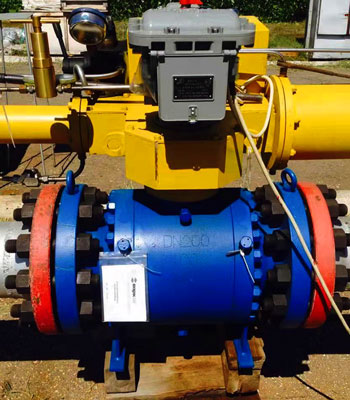As one of Indonesia's top check valve suppliers, we bring you this comprehensive guide on the types of check valves and their application considerations.
Check valves are manufactured to allow the flow of media in one direction. They prevent backflow, have minimum resistance and leakage. These self-actuated valves that act fast need no external means to open or close the valve. Some of the advantages of check valves include:
Also Read : Check Valves And Their Types

The construction of a check valve
There are three parts to a basic check valve – disk cover (also called bonnet) and body. This disk is connected to a hinge, and it allows the forward flow of media by swinging away from the valve seat. It falls back into position when the upstream flow of media ceases, therefore preventing backflow.
In some check valves like folding disk valves, two halves of a disk are connected in the center. These halves fold backward when the media is flowing, and a spring closes them when the flow stops. There are other check valves like lift-check, where the disc is a piston that moves up due to the force of flowing media and moves down due to gravity.
When it comes to size, most check valves come within a standard range - NPS ¹⁄₄ (DN 6) to NPS 72 (DN 1800). Good check valve manufacturers in Indonesia can supply customized sizes to meet specific requirements.
These valves come in numerous disk and seat designs based on the application. In all of them, the disk is unguided as it moves to the closed position or the open position.
The angle between the seat and vertical plane in swing check valves ranges from 0 to 45 degrees. For instance, vertical seats often have a 0-degree angle, but usually, it falls within the 5-to-7-degree angle. The reason being large angles reduce the distance of disk travel, which results in a quick closing. That, in turn, lessens the possibility of a water hammer.
The material of the seat in wing check valves also varies. For example, there are soft-seated valves and metal-to-metal seating. The prior offers better leak tightness so do combination seats, which have a metal ring with a resilient insert.
If the flow of media is going to be pulsating, don't use a swing check valve. The swing disk continuously flaps against the seat, causing damage to the valve. So much so that it can come loose.
These valves have a piston disk and dashpot perfectly centered, and the wall of both have equal thickness. There are large steam jackets on the inside of the piston and outside of the dashpot. This prevents any sticking during differential expansion.
A lift check valve seat design is similar to globe valves. The seat ring has a heavy uniform cross-section like a barrel, and it has to be screwed and welded to seal. The valve disk can be a ball or piston based on the application, such as when the media is highly viscous, a ball-lift check valve is suitable.
Lift check valves are ideal for high-pressure applications and when the flow velocity is high because they have better leak tightness than swing check valves.
These valves have a wafer-body pattern known as split disk check valve or double disk check valve. They are available in both hard and soft seats and come in compact sizes. It is why they are often used when space is an issue. They are also popular in applications that require gas or low-pressure liquid.
Conventional swing check valves come with a few drawbacks. Tilting disk check valves were manufactured to correct them. These valves open completely and remain steady even when the flow velocity is low. However, they close swiftly when the forward flow of media stops.
The dashpot effect is minimal in these types of check valves because they have a dome-shaped disk. This disc keeps floating because the fluid is both at the top and bottom of its surface. As a result, titling disk check valves show good performance in high-velocity, pulsating, or turbulent flow.
In some facilities where space is a constraint, horizontal installation is the only option. However, many technical issues are bound to happen with other orientations. Some of the most common issues are:
The orientation and the location of the check valve are crucial when considering them for an application because the force of gravity impacts their function.
Another consideration is fluid flow velocity because it can impact the life span of a check valve. The size of the check valve should be such that the normal fluid velocity is enough to keep the disk open. It ensures that the disk doesn't flutter - often the most common reason for valve failure. Lastly, never install a check valve immediately downstream to a turbulence source – these include tee-branch connection, pump, control valve, or elbow.
There is much to be considered when deciding which type of check valve suits which application. Therefore, it is always recommended to take the guidance of industrial valve manufacturers in Indonesia. Their expertise will help you find the most fitting valve for your specific requirements.

